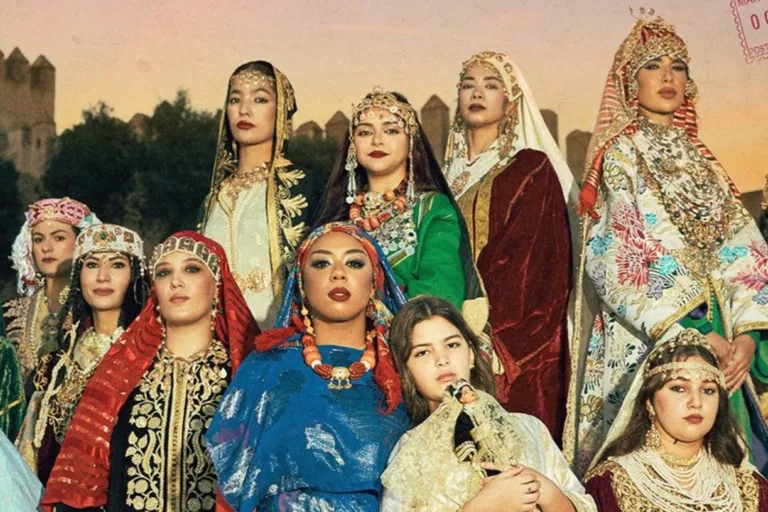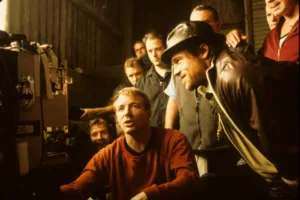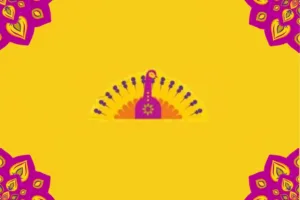As the sun rises on Eid al-Adha across Morocco, families gather to celebrate this tradition altogether in faith and unity. This very day requires clothes that reflect both cultural heritage and modesty. Let’s find out how to dress to impress and feel your best during this traditional day
Known as the festival of sacrifice in the Islamic religion, Eid Adha is an important event for Muslims. It commemorates the willingness of the prophet Ibrahim to sacrifice his own son for the sake of Allah. This day is marked by faith, prayer, gatherings, charity, and forgiveness.
In Morocco, the celebration of Eid al-Adha is a vibrant mix of spirituality and rich cultural traditions. The traditional attire worn by men, women, teens and children is central to the occasion, each piece reflecting heritage and identity. These outfits, which are often decorated with detailed embroidery and bright colors, add to the festive spirit and highlight Moroccan artistry.
Moroccan clothing for Eid al-Adha is deeply rooted in tradition. Men typically wear the “djellaba,” a long, loose-fitting robe that is both comfortable and dignified, or the “Jabador” which is a traditional Moroccan outfit that’s typically worn by men and consists of two main pieces, a long tunic and matching pants.
The tunic is often decorated with embroidery, while the pants are usually loose-fitting for comfort. The djellaba is often paired with a “fez,” a traditional red hat that adds a touch of elegance.
Women, on the other hand, may choose to wear the “Djellaba, Kaftan, or the “Jawhara. A baggy robe with a hood, the djellaba is worn by men and women in Morocco. It’s comfortable and used for everyday use or in special events.
The Kaftan is a long elegant dress for women, often paired with embroidery. The former is only worn for formal occasions and celebrations. Meanwhile, the Jawhara is a traditional, ornate dress with detailed embroidery worn by women for special events to unveil cultural heritage and style.
These special attires are detailed clothes with beautiful embroidery and vibrant colors. Plus, they are more than just clothes: they actually celebrate Moroccan art and craftsmanship.
Modern Interpretations
While tradition remains the essence of this celebration, modern influences have also found their way into Moroccan culture. Young men and women might choose contemporary styles that mix traditional elements with current fashion trends.
A modern Kaftan may feature minimalistic designs or be made from lighter and more variable fabrics to add comfort. Similarly, men’s djellabas might come in a range of colors and patterns, allowing for personal expression while remaining modest.
The Role of Accessories
Accessories play a crucial role in completing the Eid al-Adha traditional clothes. For men, this could include a pair of leather slippers known as “Belgha” and a traditional belt called “Hzam.”
Women often wear jewelry to spice up their look, including gold or silver necklaces, earrings, and bracelets that add some sparkles to their final look. These accessories add a touch of elegance and sparkle, transforming women’s final look into something truly attractive.
Henna tattoos, which are often applied during the days leading up to Eid, are another beautiful way Moroccan women enhance their look for special occasions.
Dressing the Whole Family
Eid al-Adha is a family affair, and dressing up is an activity that involves everyone, from the youngest to the oldest. Children’s outfits are miniature versions of adult clothes, with boys wearing tiny djellabas and girls in colorful kaftans or Djellabas. This not only fosters a sense of inclusion but also helps to pass on cultural values and traditions to the next generation.
Eid al-Adha in Morocco is more than just a religious festival; it is a celebration of cultural heritage, family bonds, and communal unity. The attire worn during this special time is a reflection of these values, combining tradition with modernity to create looks that are both elegant and meaningful. Moroccan traditional attire not only honors the past but also embraces contemporary fashion trends, unveiling the unique fusion of old and new Moroccan culture.
Whether you choose to stick with classic garments or experiment with contemporary styles, the key is to honor the spirit of Eid by dressing modestly and with pride. As you gather with your loved ones to celebrate, let your attire be a testament to your faith, your culture, and your personal sense of style.
















